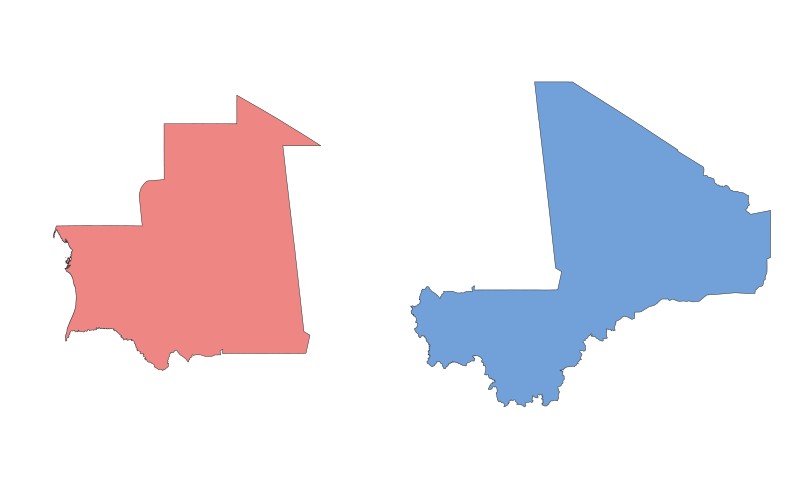茅利塔尼亞 vs. 馬利

地理比較表
| 項目 | 茅利塔尼亞 | 馬利 |
|---|---|---|
| 位置 | 位於非洲西北部,西瀕大西洋,北接阿爾及利亞和西撒哈拉,東鄰馬利,南接塞內加爾。 | 位於非洲西部內陸,北接阿爾及利亞,東鄰尼日,南靠布吉納法索和象牙海岸,西接茅利塔尼亞和塞內加爾。 |
| 面積 | 約1,030,700平方公里 | 約1,240,192平方公里 |
| 氣候 | 主要為熱帶沙漠氣候,南部為半乾旱氣候。 | 北部為撒哈拉沙漠氣候,南部為熱帶草原氣候。 |
| 自然資源 | 鐵礦、銅、金、磷酸鹽、石油。 | 黃金、鈾、鹽、磷酸鹽、鐵礦。 |
| 城市發展 | 首都諾克少為政治中心,努瓦克肖特為最大城市與經濟中心。 | 首都巴馬科為政治與經濟中心,其他主要城市包括通布圖和加奧。 |
| 交通 | 公路網絡有限,鐵路主要用於礦產運輸;努瓦克肖特為主要港口。 | 公路為主要交通方式,鐵路連接塞內加爾;無海港,依賴鄰國港口。 |
國家描述
茅利塔尼亞
茅利塔尼亞位於非洲西北部,歷史上曾是古代貿易路線的一部分,受到阿拉伯文化和柏柏爾文化的深遠影響。該國以伊斯蘭教為主要宗教,官方語言為阿拉伯語。經濟依賴礦業(尤其是鐵礦)和漁業,但貧困率較高。近年來,石油開採成為新的經濟增長點。社會結構仍保留部落傳統,城市化程度較低。
馬利
馬利是西非內陸國家,歷史上曾是加納帝國、馬利帝國和桑海帝國的核心區域,文化遺產豐富。通布圖以其古老的伊斯蘭學術中心聞名。經濟以農業和礦業(尤其是黃金)為主,但政治不穩定和恐怖主義威脅阻礙發展。馬利擁有多元民族,包括班巴拉、富拉尼和圖阿雷格等族群,音樂與文化在非洲極具影響力。交通以公路為主,缺乏出海口是經濟發展的挑戰之一。